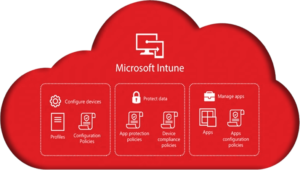Microsoft Operations Manager Suite (OMS)
Microsoft OMS is a suite of products in the Microsoft Cloud. It can manage both on-premises resources and those in Azure, AWS, or anywhere else really. It also works on Windows or Linux. It provides log analytics, automation, backup and recovery, and can help your security and compliance.
If you would like to evaluate OMS, you can sign up for a free trial by going to the OMS website.
Connecting Data Sources
The first thing we must do is connect some data sources. OMS uses this term for anything that provides it data, such as servers, on-premises Operations Manager (SCOM), or Azure Storage. To get to this, log in to your OMS portal and click the settings tile in the lower-right corner. As you can see, I’m only 33% complete because I have no sources yet.
When the Settings page opens, click “Connected Sources” in the middle of the screen.
You will see the available agents for download, as well as your workplace ID, primary key, and secondary key. You will need these values when you install the agent. When you launch the install, the third screen asks you to pick a connection point. It gives you the options of Azure Operational Insights and System Center Operations Manager. Azure Operational Insights was recently renamed to OMS. As of this writing, the wizard still says Azure Operational Insights instead of Operations Manager Suite, so go ahead and select Azure Operational Insights.
Next, it will ask for your workspace ID and key. Input the workplace ID from the portal. The workspace key is the primary key from the portal. The rest of the install is just clicking Next.
After you connect a data source, it will take some time for the data to get into OMS.
Viewing Data
After your data sources have synced, your dashboard will begin to give you some information.
For this view, I can tell that I have a server without malware protection and that it is had one piece of software installed in the last 24 hours (likely the OMS agent). I drill down into any of these tiles and see additional information, such as which servers are having issues.
You can see all of the different options available to us from this screen. We can look at this as a chart, table, export it to Excel, favorite the view, etc.
Here is another helpful dashboard that shows me what accounts have logged in the last 24 hours, as well as the devices that were logged into:
I would encourage you to get a trial of this and explore it. It is a really powerful tool, and has many capabilities.





